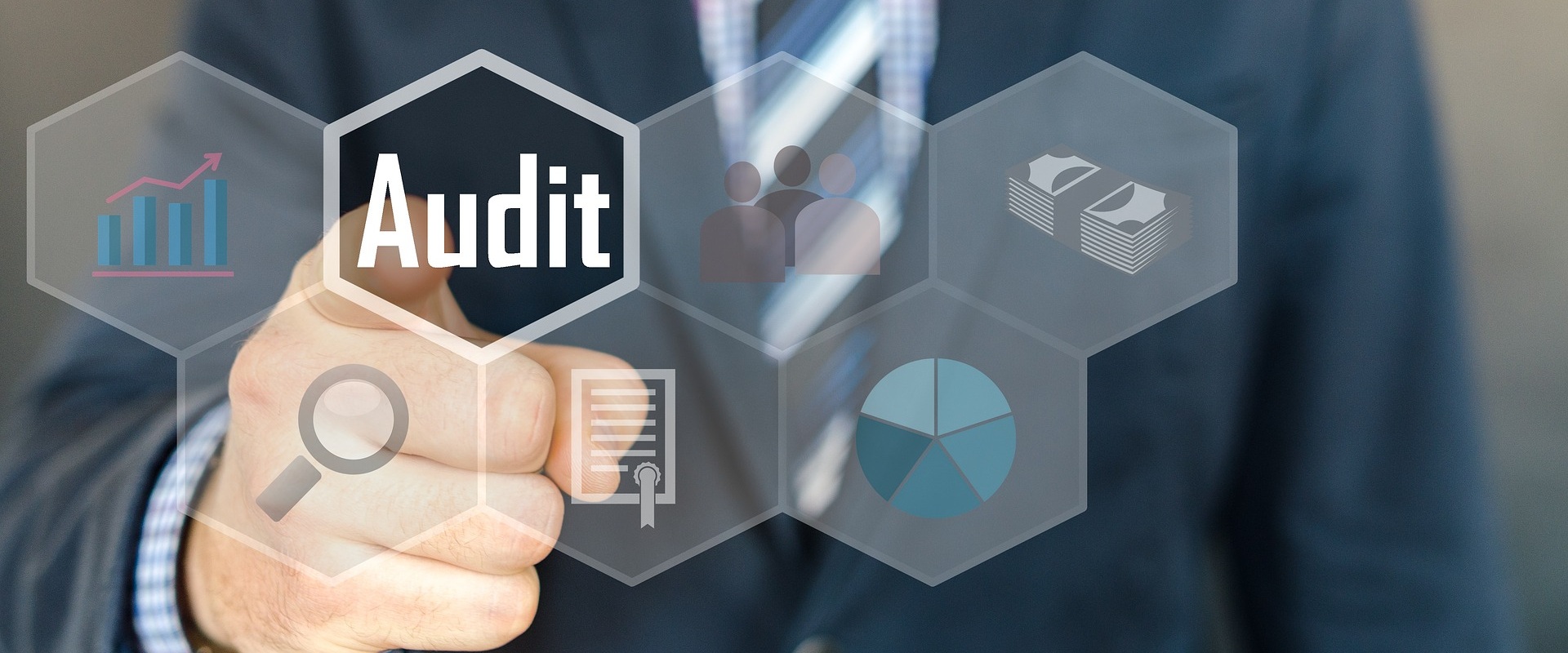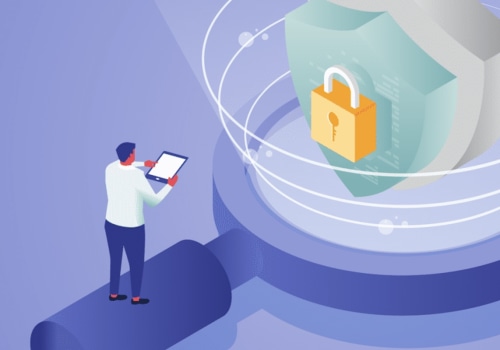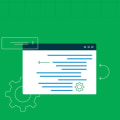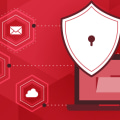Network security is essential for every business, no matter the size or industry. A comprehensive security audit can help identify vulnerabilities, weak points, and areas of improvement in your network security infrastructure. But what exactly should you be looking for when conducting a security audit? This article provides an overview of network security audits, including the different types of audits, what they involve, and the benefits they provide. A network security audit is an in-depth examination of your organization's IT infrastructure, policies, and procedures. It assesses the effectiveness of existing security measures and identifies potential risks or vulnerabilities.
The audit also evaluates the level of compliance with industry regulations such as HIPAA, as well as internal policies and procedures. By performing a comprehensive audit, organizations can ensure their networks are secure and compliant. A network security audit is an assessment of the security measures that an organization has in place to protect its data. This audit examines the rules, processes, and procedures in place to ensure that only authorized users can access the organization's networks, systems, and data. It also evaluates the effectiveness of existing measures and identifies any potential weaknesses or vulnerabilities that could lead to a data breach.
When it comes to understanding what a network security audit is, it is important to understand the different objectives and scope of the audit. The objectives of a network security audit are to assess the security measures that are in place, identify any potential weaknesses, and recommend changes or improvements that can be made to ensure the organization's data is safe. The scope of a network security audit may vary depending on the size and complexity of the organization's network, but typically includes all hardware, software, and services used by the organization. A network security audit can help protect an organization's data by ensuring that the appropriate measures are in place to protect it.
During an audit, the auditor will identify any vulnerabilities or weaknesses in the system and recommend changes or improvements that can help protect the organization's data. This may include implementing stronger authentication methods, increasing encryption levels, or implementing additional security measures. Examples of common security audit tasks include reviewing access control policies, examining system logs and event logs, evaluating authentication mechanisms, performing vulnerability scans, and checking for compliance with industry standards. It is also important to test backup processes and disaster recovery plans to ensure that the organization can quickly recover from any potential data loss.
When conducting a network security audit, there are a number of best practices that should be followed. These include having a clear understanding of the objectives and scope of the audit, using industry-standard tools and techniques for testing, documenting all findings and recommendations, and providing a detailed report of the audit results. It is also important to ensure that all recommendations are implemented in a timely manner. A network security audit is an important step for any organization that wants to ensure its data is secure. By understanding what a network security audit is, its objectives and scope, and how it can help protect an organization's data, organizations can make sure they are taking the necessary steps to keep their data safe.
What Are the Objectives of a Network Security Audit?
A network security audit is an essential tool for organizations to protect their data and systems from unauthorized access. The objectives of a network security audit include assessing the effectiveness of existing measures, identifying any potential vulnerabilities or weaknesses, and determining whether only authorized users have access to the organization's networks, systems, and data. The audit should also evaluate the effectiveness of the organization’s security policies and procedures, as well as its current security infrastructure. This includes examining the adequacy of security measures such as authentication, authorization, encryption, access control, firewalls, intrusion detection and prevention systems, and other technologies. Additionally, the audit should evaluate the organization’s ability to respond to security incidents, including ensuring that appropriate incident response procedures are in place. Network security audits are important because they help organizations identify and address any potential security gaps.By proactively assessing their security posture, organizations can better protect their data and systems from malicious actors. Additionally, conducting regular audits can help organizations ensure that their security measures are up to date and in line with industry standards.
What is a Network Security Audit?
A network security audit is an assessment of the security measures that an organization has in place to protect its data. It is an important way for organizations to ensure that only authorized users can access their networks, systems, and data, and to identify any potential weaknesses or vulnerabilities that could lead to a data breach. The audit examines existing security measures, such as rules, processes, and procedures.It evaluates the effectiveness of the measures and makes recommendations for any changes that need to be made in order to improve security. The audit also identifies any potential threats or risks that could lead to a data breach. In addition to assessing existing security measures, the audit also looks at any potential new technologies or tools that could be used to further enhance the organization’s security. This includes evaluating the effectiveness of the current security infrastructure, as well as any new technologies that may be available.
Overall, a network security audit is an important step for organizations in ensuring the protection of their data and systems. It can help organizations identify any potential weaknesses in their current security measures and take steps to address them.
What Is the Scope of a Network Security Audit?
A network security audit is an assessment of the security measures that an organization has in place to protect its data. It is important to have a clear scope of the audit to ensure that all relevant areas are included in the process.The scope should include a review of network architecture, authentication systems, access control, data encryption and other security measures. Network architecture should be reviewed to ensure that the organization's networks are properly configured and that all components are functioning as intended. Authentication systems should be evaluated to make sure that only authorized users can access the organization's networks, systems, and data. Access control should also be evaluated to make sure that any potential threats or vulnerabilities can be identified and addressed. Data encryption should be tested to ensure that confidential information is protected from unauthorized access. The scope of a network security audit should also include an evaluation of existing security measures and procedures.
This includes an assessment of policies and procedures for managing user access, logging and monitoring activities, backup and recovery operations, as well as other security measures. By having a clear scope of the network security audit, organizations can ensure that all relevant areas are included in the process. This will help to protect their data and ensure that any potential threats or vulnerabilities are identified and addressed.
How Can a Network Security Audit Help Protect an Organization's Data?
A network security audit is an important tool for organizations to protect their data. By examining the rules, processes, and procedures in place to ensure only authorized users can access the organization's networks, systems, and data, an audit can identify any potential weaknesses or vulnerabilities that could lead to a data breach. Common security measures that a network security audit evaluates include authentication, access control, encryption, intrusion detection, and firewalls.Authentication is an important part of network security. It ensures that only authorized users can access the networks, systems, and data. This can be done through passwords, two-factor authentication, biometrics, or other methods. Access control is another layer of security that sets up who can access what resources and at what level.
This can be done through user accounts and permissions, or by limiting access to certain areas of the network. Encryption is also an important part of network security. It ensures that data is kept secure even if it is intercepted or stolen by unauthorized users. Intrusion detection systems are used to detect any suspicious activity on the network and alert administrators so they can take action.
Finally, firewalls are used to prevent unauthorized access to the network and keep malicious traffic out. By examining these and other security measures, a network security audit can help organizations identify any potential weaknesses or vulnerabilities in their system. By fixing these issues and regularly performing audits, organizations can protect their data and ensure it is not compromised.
Examples of Common Security Audit Tasks
A network security audit typically involves examining a variety of different aspects of an organization's network security. These tasks can include evaluating the effectiveness of existing security measures, as well as identifying any potential vulnerabilities or weaknesses that could lead to a data breach.Some of the most common security audit tasks include: 1.Access control: This includes reviewing and assessing the access privileges of users, as well as ensuring that only authorized users have access to the organization's networks, systems, and data. It is important to make sure that the right people have access to the right resources.
2.Security configuration review:
This involves assessing the security configurations of all the systems and networks within an organization. It is important to ensure that all systems are properly configured with the latest security updates and patches, and that any sensitive data is adequately protected.3.Vulnerability scanning:
This involves scanning the organization's networks and systems for any potential security vulnerabilities. It is important to identify any potential weaknesses or flaws in order to prevent a potential data breach.4.Network traffic monitoring:
This involves monitoring the traffic on the organization's networks and systems for any suspicious activity or malicious traffic.This can help identify any potential intrusions or attacks that may be taking place.
5.Security log review:
This involves reviewing the security logs of the organization's systems and networks. This helps to identify any suspicious activity or unauthorized access attempts, which can then be addressed accordingly. These are just a few examples of the tasks that are typically included in a network security audit. It is important for organizations to regularly assess their networks and systems to ensure that they are adequately protected from potential threats.Best Practices for Conducting a Network Security Audit
A network security audit is an important step for organizations to ensure the safety of their data and networks. In order to ensure that a comprehensive assessment is conducted, it is important for organizations to follow a set of best practices when it comes to conducting a network security audit.The first best practice is to create a comprehensive security plan. This plan should outline the objectives of the audit, the scope of the audit, and any other specific requirements that need to be addressed. It should also include a timeline for when the audit should be completed and any resources that will be needed to complete the audit. The second best practice is to create an inventory of all the assets that need to be audited.
This includes all systems, networks, and data that need to be assessed. It is important to ensure that all assets are accounted for so that the audit can be as comprehensive as possible. The third best practice is to identify any potential vulnerabilities or weaknesses in the organization's systems and networks. This should include an assessment of the organization's security policies and procedures and an evaluation of how effective they are in protecting the organization's data.
The fourth best practice is to perform a penetration test on the organization's systems and networks. A penetration test is a simulated attack that can help identify any potential vulnerabilities or weaknesses that could be exploited by malicious actors. The fifth best practice is to review the organization's incident response plan. This plan should outline how the organization will respond in the event of a data breach or other security incident.
It should also include a detailed response process and procedures for mitigating any damage caused by a security incident. Finally, it is important to develop an action plan based on the results of the audit. This plan should address any weaknesses or vulnerabilities that were identified during the audit and include steps that can be taken to remediate them. Additionally, the plan should include steps that can be taken to prevent similar incidents from occurring in the future. Following these best practices when conducting a network security audit can help organizations protect their data and networks from malicious actors.
By creating a comprehensive security plan, identifying potential vulnerabilities, performing penetration tests, reviewing incident response plans, and developing an action plan, organizations can ensure that their networks and data remain secure.
How Can a Network Security Audit Help Protect an Organization's Data?
A network security audit is a critical tool for ensuring the security of an organization's data. By examining existing security measures and identifying vulnerabilities, it helps organizations protect their data from unauthorized access and malicious attacks. Common security measures that are evaluated during a network security audit include authentication, authorization, access control, encryption, intrusion detection systems, antivirus software, and firewalls. Authentication involves verifying the identity of users who are attempting to access the organization's networks and systems.Authorization then ensures that users only have access to the resources they are allowed to use. Access control is used to limit the types of activities that users can perform. Encryption is used to protect data in transit and at rest. Intrusion detection systems monitor network traffic for malicious activity and alert administrators if anything suspicious is detected.
Antivirus software scans files for viruses and other malicious code, while firewalls act as a barrier to protect networks from outside attacks. By conducting a network security audit, organizations can ensure that all of these security measures are configured properly and are working as expected. This helps them better protect their data from unauthorized access or malicious attacks. It also provides the opportunity to identify any potential weaknesses in the existing security measures and take steps to address them before any damage is done.
How Can a Network Security Audit Help Protect an Organization's Data?
A network security audit can help protect an organization's data by identifying existing security measures, identifying any potential vulnerabilities or weaknesses in those measures, and providing recommendations to improve the organization's security posture. Common security measures that may be evaluated in a network security audit include access control lists, firewalls, encryption, password policies, and logging and monitoring systems.Access control lists (ACLs) are used to restrict access to certain networks, systems, or data. ACLs are configured to specify which users are allowed to access specific resources. Firewalls provide an additional layer of protection by limiting access to certain network ports and protocols. Encryption is used to protect sensitive data from unauthorized access by scrambling the data so it cannot be read without a decryption key.
Password policies require users to choose strong passwords and change them regularly. Logging and monitoring systems track user activity, allowing organizations to identify suspicious activity and quickly respond if a breach occurs. By performing a network security audit, organizations can ensure that their security measures are effective and identify any areas that need improvement. In addition, organizations can receive recommendations on how best to secure their networks, systems, and data. Network security audits are an essential part of any organization's data protection strategy.
They provide an invaluable opportunity to identify weaknesses and vulnerabilities that could lead to a data breach. Organizations should ensure that they have regular security audits in place, as well as best practices for conducting them. To ensure the safety of their data, organizations should also consider enlisting the help of an IT professional to conduct a thorough audit and provide advice on strengthening their security measures. Organizations should also keep abreast of new security technologies and trends, and regularly update their security policies and procedures to ensure they are up-to-date. Taking these steps can help organizations protect their data, mitigate risk, and avoid costly data breaches. It is important to remember that network security audits are only as effective as the people who use them.
Organizations should ensure that their staff are trained on best practices for conducting audits, and take the time to thoroughly assess their systems for any potential vulnerabilities.








Leave Message